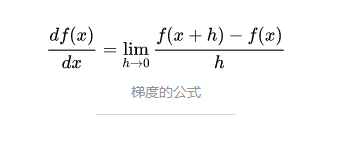可以参考:cs231n assignment1 SVM 完整代码
231n作业 多类 SVM 的损失函数及其梯度计算(最好)https://blog.csdn.net/NODIECANFLY/article/details/82927119 (也不错)
作业部分:
完成结构化SVM的损失梯度的理论计算
完成梯度计算的循环形式的代码 svm_loss_naive
完成向量化梯度计算的代码 svm_loss_vectorized
完成随机梯度下降法的代码,在linear_classifier.py文件的 SGDLinearClassifier.train()函数中
其中对多分类SVM损失函数的推导先不赘述,最后得到一个对N个样本计算梯度并返回梯度与损失的矩阵,梯度部分如下:
def svm_loss_naive(W, X, y, reg): """ Structured SVM loss function, naive implementation (with loops). Inputs have dimension D, there are C classes, and we operate on minibatches of N examples. Inputs: - W: A numpy array of shape (D, C) containing weights. - X: A numpy array of shape (N, D) containing a minibatch of data. - y: A numpy array of shape (N,) containing training labels; y[i] = c means that X[i] has label c, where 0 <= c < C. - reg: (float) regularization strength Returns a tuple of: - loss as single float - gradient with respect to weights W; an array of same shape as W """ dW = np.zeros(W.shape) # initialize the gradient as zero # compute the loss and the gradient num_classes = W.shape[1] num_train = X.shape[0] loss = 0.0 for i in range(num_train): scores = X[i].dot(W) correct_class_score = scores[y[i]] for j in range(num_classes): if j == y[i]: continue margin = scores[j] - correct_class_score + 1 # note delta = 1 if margin > 0: loss += margin dW[:,j]+=X[i] #数据分类错误时的梯度 dW[:,y[i]]-=X[i] #数据分类正确时的梯度,所有非正确的累减 # Right now the loss is a sum over all training examples, but we want it # to be an average instead so we divide by num_train. loss /= num_train dW /=num_train # 加上正则项的部分:reg? loss += reg * np.sum(W * W) dW+=reg*np.sum(W) #reg是正则化强度的量 ############################################################################# # TODO: # # Compute the gradient of the loss function and store it dW. # # Rather that first computing the loss and then computing the derivative, # # it may be simpler to compute the derivative at the same time that the # # loss is being computed. As a result you may need to modify some of the # # code above to compute the gradient. # ############################################################################# return loss, dW
写完损失后:进行几个步骤
图像预处理
通常我们会将所有图片,包括训练数据和待分类数据,减去图片每个位置像素的均值,使得数据中心化,这样可以提高模型的效果。同时,也可以对中心化后的数据归一化处理,使其分布在[-1, 1]区间,进一步优化模型效果。
小批量数据梯度下降(Mini-batch gradient descent)
相比于每次拿一个样例数据进行梯度更新,每次使用一个小批量数据进行梯度更新能够更好的避免单个样本数据的扰动,可以显著提高模型训练的效率,损失的变化更加平滑,使得模型更快的收敛。具体操作方法是一次计算一个批量的数据的结果,如256个样本,计算每个结果下权重矩阵每个变量的梯度。对于每个权重分量,累加256个梯度值,求均值作为该分量的梯度,更新该分量。
梯度下降和梯度检验
对求得的理论梯度与数值梯度进行对比,确认没有问题后进行计算:
理论梯度:

数值梯度:
梯度数值解的计算很简单,根据下面梯度的公式,在给定的样本和权重矩阵下,计算输出,然后让权重矩阵的变量发生微小的变化,再计算输出,两次输出的差值除以变化量就是权重矩阵的梯度:

向量化的计算:
def svm_loss_vectorized(W, X, y, reg): """ Structured SVM loss function, vectorized implementation. #计算向量化计算损失和梯度 Inputs:输入都为numpy array - W: 形状为(D, C)的权重矩阵,3073x10 - X: 形状为(N, D)的小批量数据,200x3073 - y: 形状为(N,)的标签向量,200,由以上关系可得XW为所有样本的得分,第i行为样本i的得分,XW的第ij个元素 即为样本i在第j个分类的得分; y[i] = c means that X[i] has label c, where 0 <= c < C. - reg: (float) 正则化损失系数(无法通过拍脑袋设定,需要多试几个值,交叉验证,然后找个最优的) 变量说明: delta:超参数,SVM的间隔,一般取1 """ num_train=X.shape[0] #X形状的第0个参数,由说明可知是N为小批量样本数200 num_classes=X.shape[1] loss = 0.0 dW = np.zeros(W.shape) # 零初始化的梯度矩阵DxC delta=1 """ patch_X=X # 200X3073 patch_y=y # 200 """ ############################################################################# # TODO: 计算loss # # Implement a vectorized version of the structured SVM loss, storing the # # result in loss. # ############################################################################# scores=X.dot(W) #所有样本的得分情况200x10(NxC) scores_y=scores[range(num_train),y] # 其中num_train和y的size都是N,每一个样本正确分类的得分(1xN)向量 scores_y=np.reshape(scores_y,(num_train,1)) #得到Nx1的矩阵,便于下面广播 margins =np.maximum(0,scores-scores_y+delta) #Nxc矩阵,第i行的C个元素为样本i对于第j类的hinge loss margins[range(num_train),y]=0 #将label所在误差置0 loss+=np.sum(margins)/num_train #计算损失data loss 部分 print(loss) loss+= 0.5*reg * np.sum(W * W) #加上正则项 0.5为了平衡W平方求导后的2 ############################################################################# # END OF YOUR CODE # ############################################################################# ############################################################################# # TODO: 计算梯度dW # # Implement a vectorized version of the gradient for the structured SVM # # loss, storing the result in dW. # # # # Hint: Instead of computing the gradient from scratch, it may be easier # # to reuse some of the intermediate values that you used to compute the # # loss. # ############################################################################# margins[margins>0]=1.0 #取大于0的为1,便于计算梯度 row_sum=-np.sum(margins,1) #对每一行不为0的margins求和,用来计算正确分类项的梯度,即该列为减去所有非正确项的特征累加 margins[range(num_train),y] =row_sum #N X C直接更改 margins正确部分的值 dW+=np.dot(X.T,margins)/num_train #x为NxD dW+=reg*W ############################################################################# # END OF YOUR CODE # ############################################################################# return loss, dW
验证没有问题之后可以进行训练。